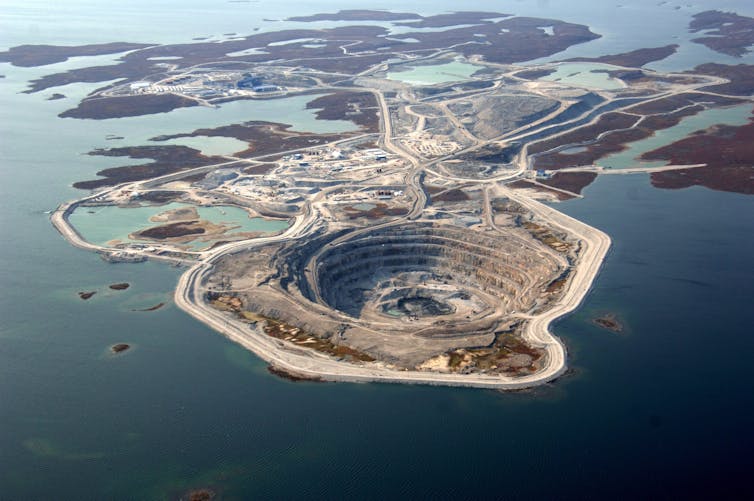Automation and remote operation are set to transform Australian mining. It makes sense: automation can address labour shortages as the industry expands, reduce costs and improve productivity, health and safety.
Yet with the looming prospect of major industry change there has been almost no public discussion about the implications of the transformational change for regional communities and society at large.
Recent attention has been triggered by Rio Tinto announcements, which include a half billion dollar investment in driverless iron ore trains in the Pilbara; new technologies in underground tunnelling and mineral recovery; a remote operations centre in Perth; and a fleet of 150 driverless haul trucks. Other mining companies have announced plans to implement autonomous haul truck fleets and underground loaders. Newcrest is developing a remote operations centre in the New South Wales regional centre of Orange.
The Centre for Social Responsibility in Mining (CSRM) at the University of Queensland has taken a broader view in investigating the potential societal implications of this transition.

The implications are far reaching. They go well beyond a change in some jobs in the Australian mining sector (and that in itself warrants substantial attention). The industry has a strong regional presence. Its workforce management practices and how, where and with whom mining companies do business have significant implications for regional communities. These decisions affect their future population, the availability of services and regional infrastructure and economic opportunities.
In the past generation, mining communities have evolved from purpose-built mining towns with 100% residential workforces to hubs of largely commuter workforces who fly-in fly-out/drive-in drive-out to meet the growing labour need of the industry.
Industry and communities are already grappling with how best to manage this approach to workforce management and its implications for regional communities. And now industry stands on the verge of another major change to its workforce management approach. It is a change with major implications for the communities in which they operate.
Automation and remote operation centres will again redefine the “mining community” along with the employment, business development and investment opportunities that come with a mine.
Within a decade, automated mines are expected to have only skeletal on-site workforce. Semi-skilled functions such as truck driving and train driving will be conducted from remote operation centres in capital cities. Highly specialist teams will visit mines at scheduled periods to support otherwise remote maintenance and management.
An automated industry with an employment base concentrated in remote operations centres in capital cities offers a very different value proposition.

There could be community benefits. Perhaps there is more potential for women and older workers to participate in mining. Mining “communities” may not be contingent on the life of a resource within one geographical area, but stabilised in areas where there is a diverse economy, more opportunities and a larger population to share the costs of social services and infrastructure.
On the flip side, jobs and business development opportunities available in remote and regional areas may be limited in number and scope. They will, at least, change.
Without the appropriate incentives and restrictions we cannot hope to capture the benefits for regions and guard against potential problems. The transition will go more smoothly if those who have a stake in the change are involved. There are too many examples of new technologies ultimately failing to deliver anticipated benefits because somewhere, someone is not aware or not prepared – the workforce, service providers and suppliers, traditional owners, education and training providers, government or mining communities.
The Centre for Social Responsibility in Mining has been applying a process called Social Licence in Design to the case of automation in the Australian mining industry. We are considering the broader societal issues of this technological transformation. Engaging wider groups in the transformation will be important in capturing the potential benefits for individuals, regional communities and broader society.
The most recent industry announcements have stimulated public discussion about automation in Australian mining. What is needed now is for the industry to open its plans to those that may be affected by, or who will need to prepare for, such a transition in a collaborative yet commercially-sensitive way.
We have worked with mining industry technical experts, social scientists, education and training specialists as well as community, regional development and sustainability professionals.
They send a clear message: industry needs broader engagement about workforce culture, education and training, participation in the mining sector by Indigenous people, women and older workers and the implications for business development and employment in regional communities.
The project is being funded as part of the CSIRO Mineral Futures Collaboration Cluster – a program of research aiming to enhance the future sustainability of Australia’s mining sector.
A discussion paper prepared for a roundtable on automation with industry, government and community participants is available here.
Comments welcome below.

